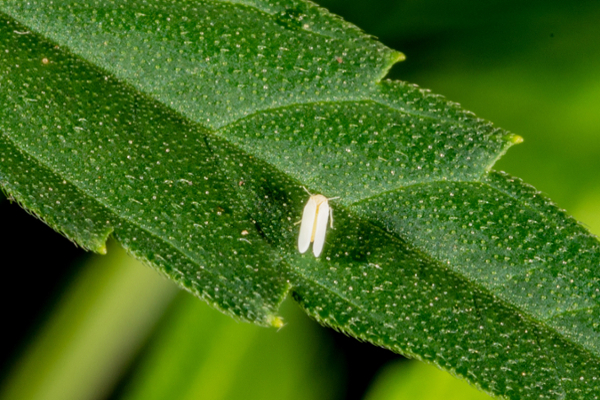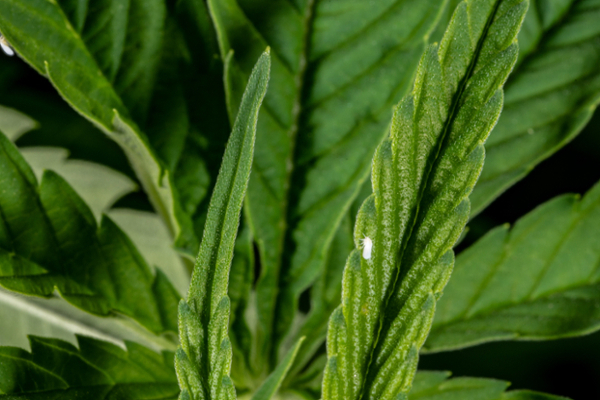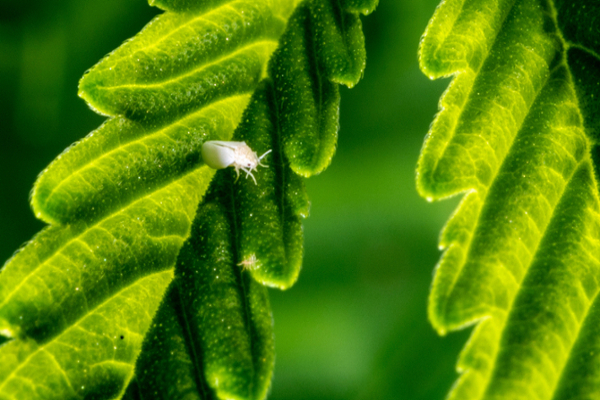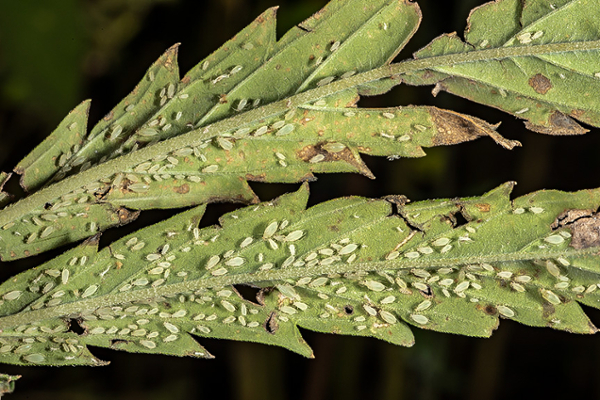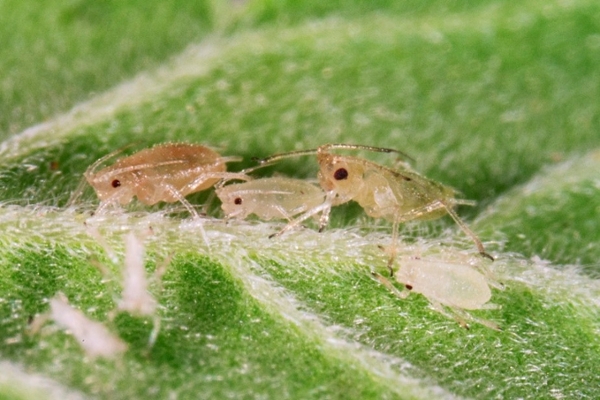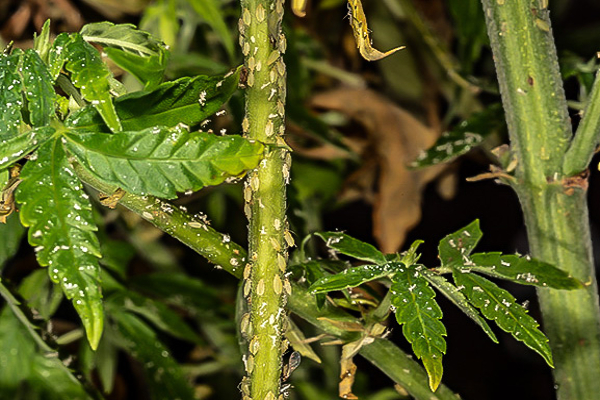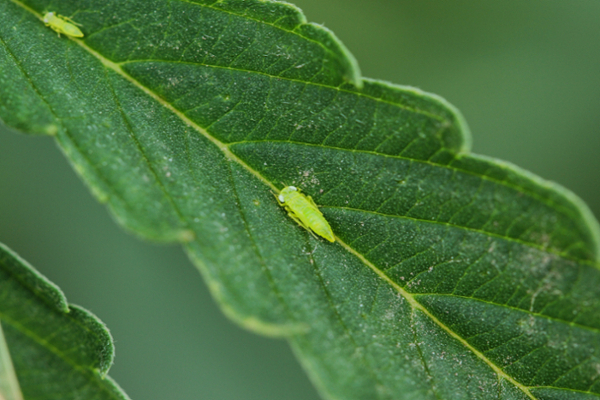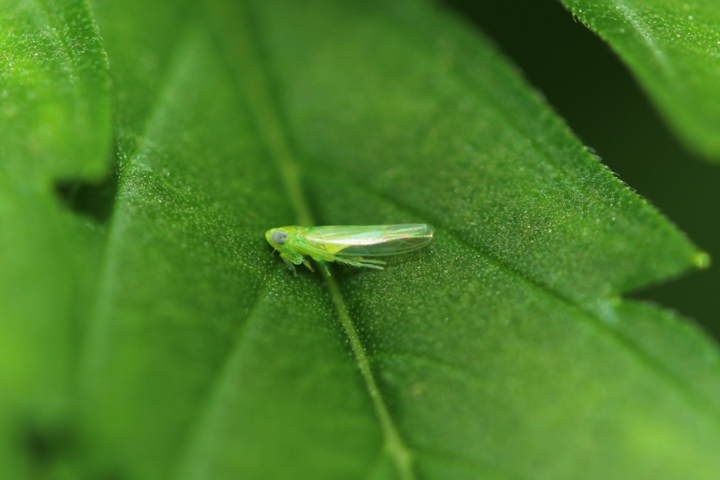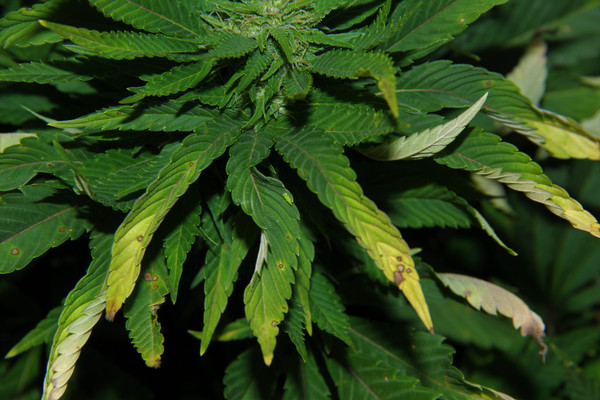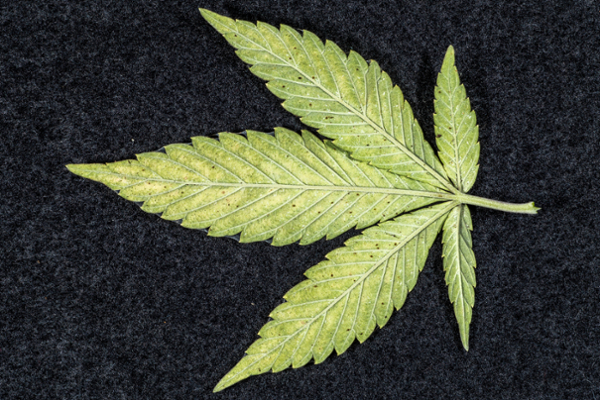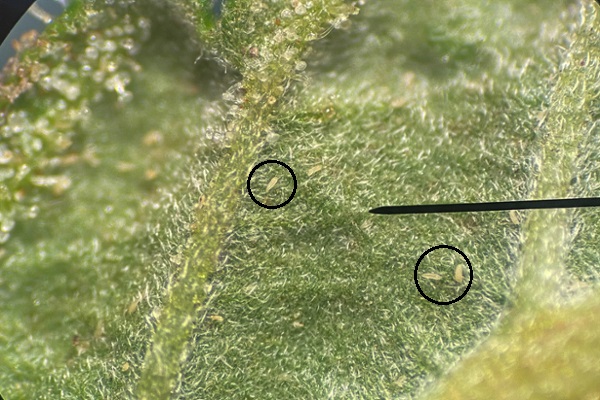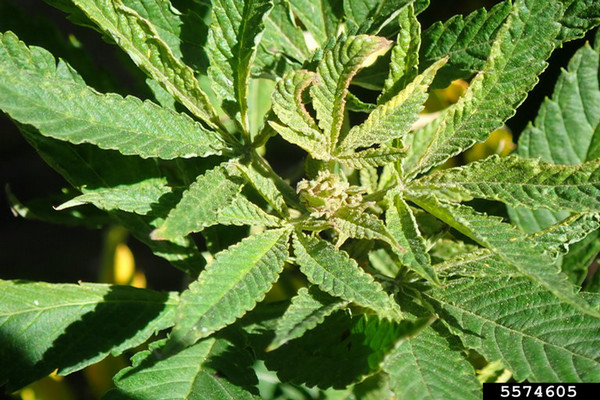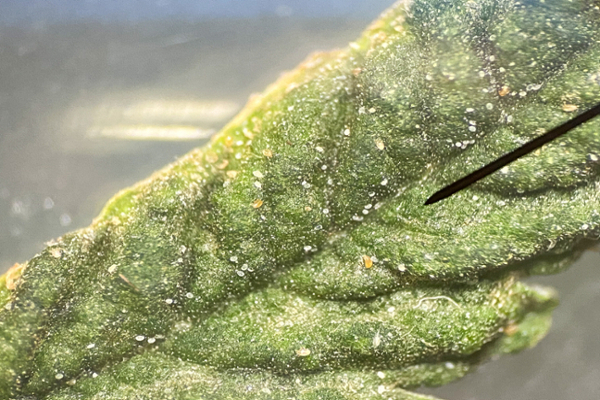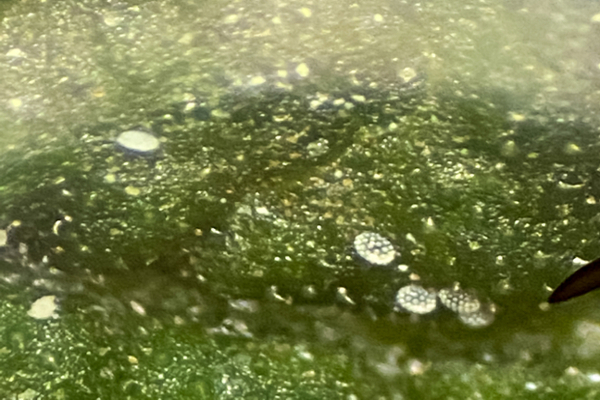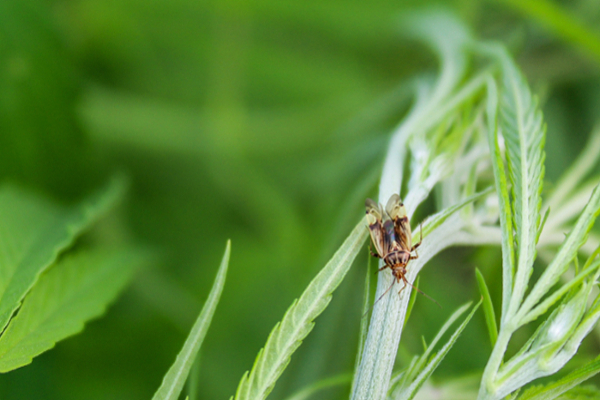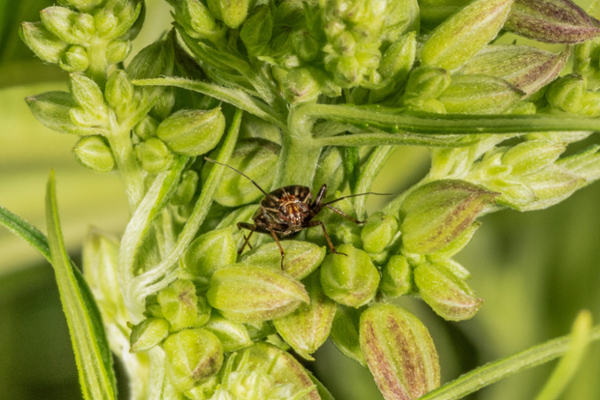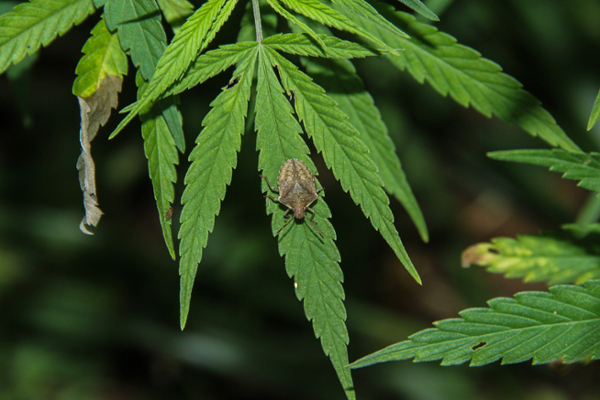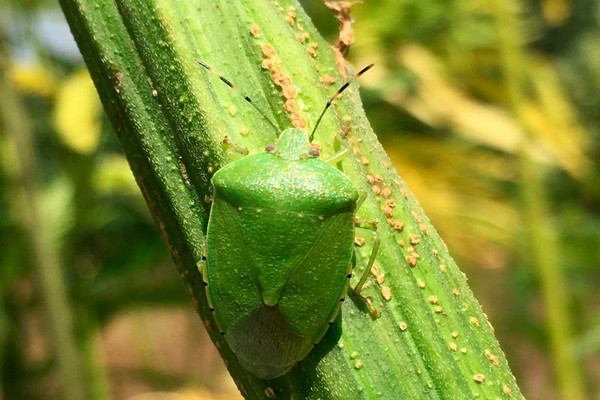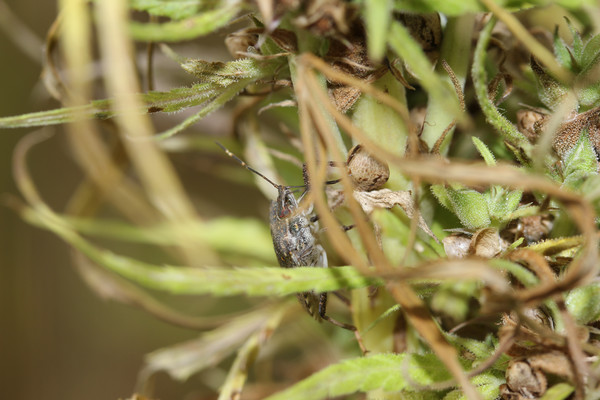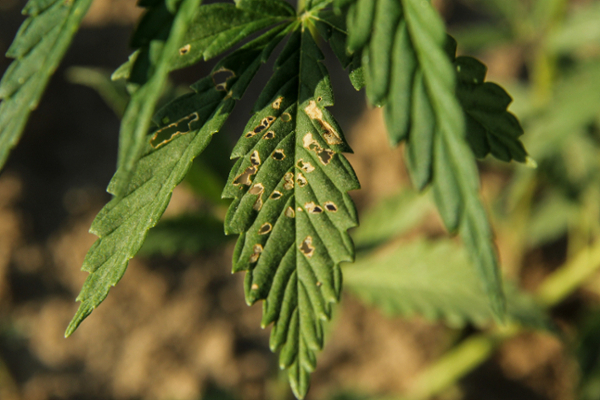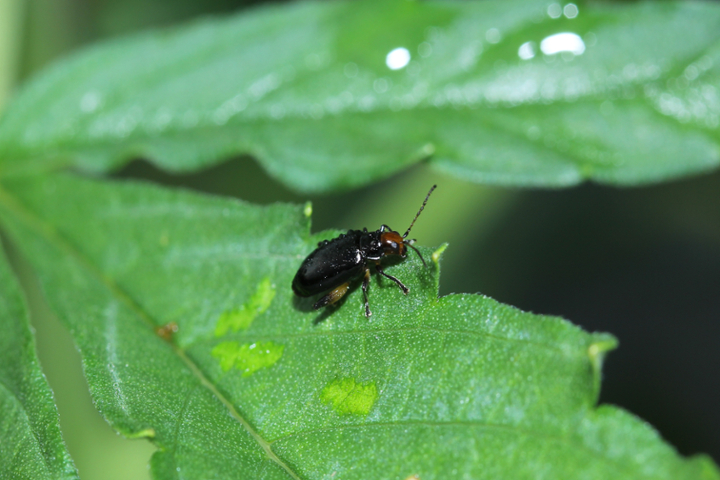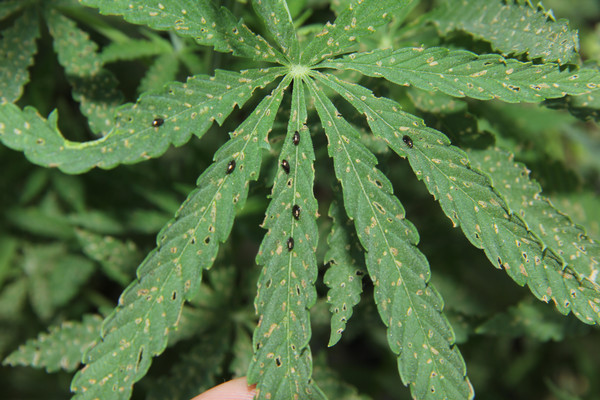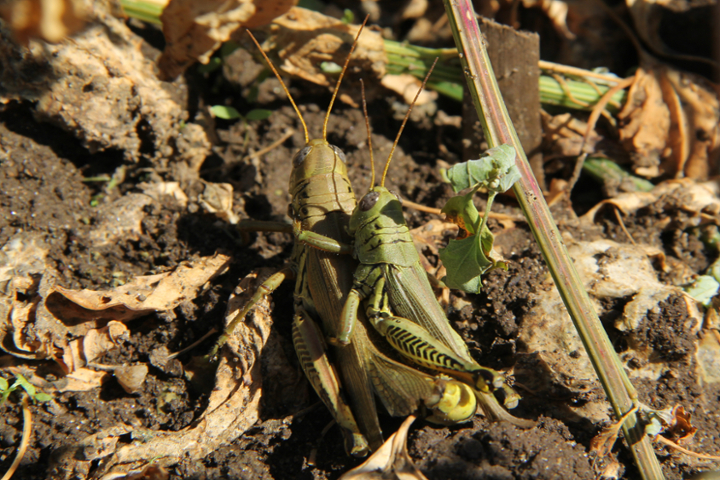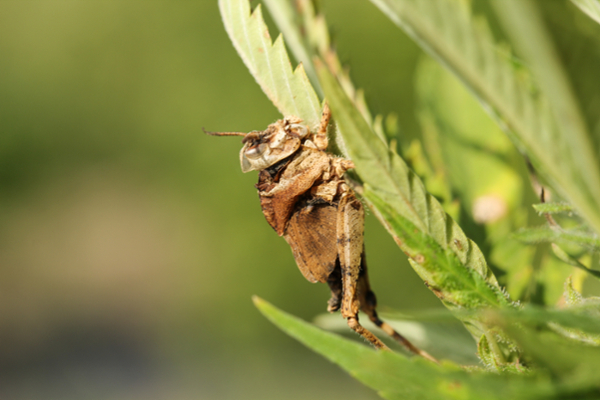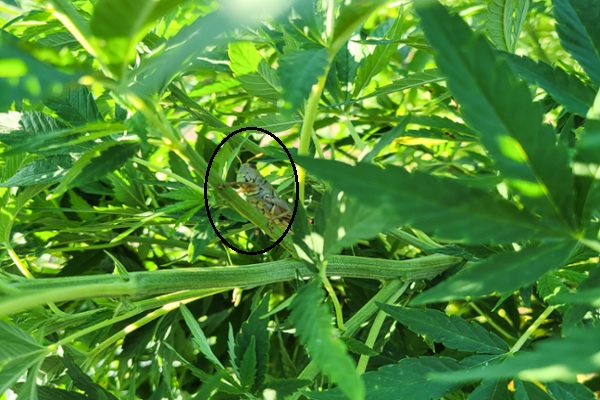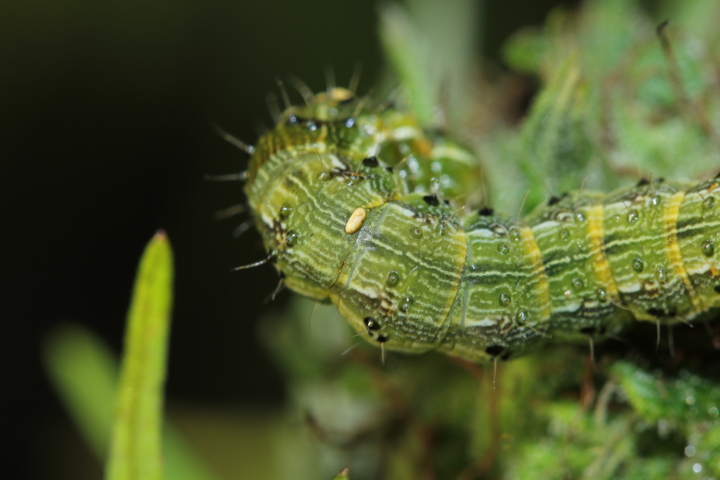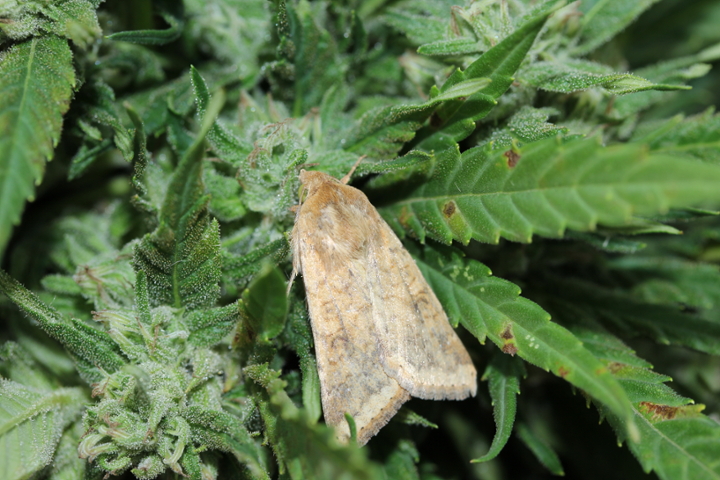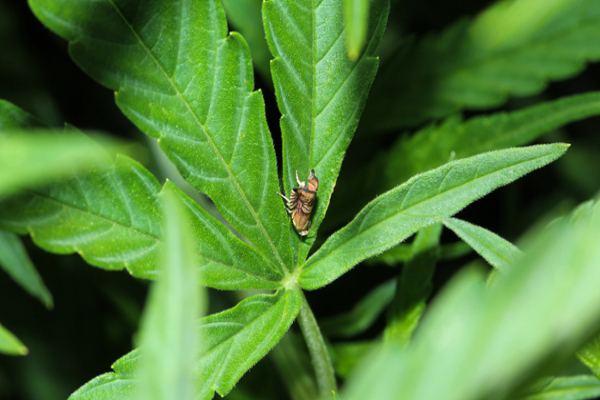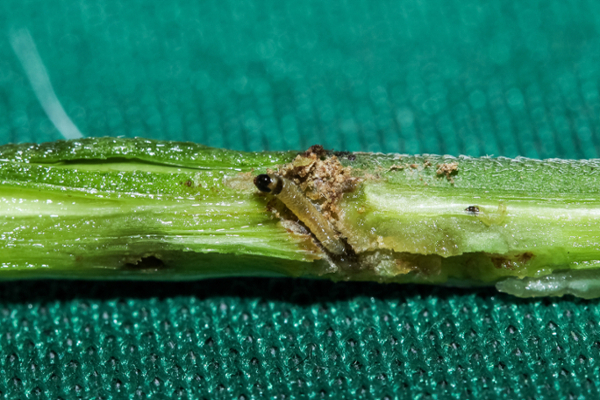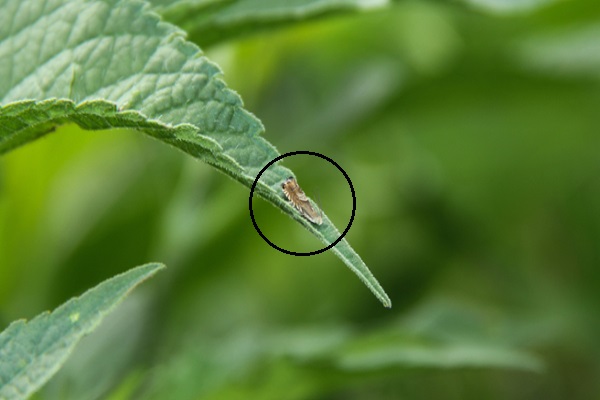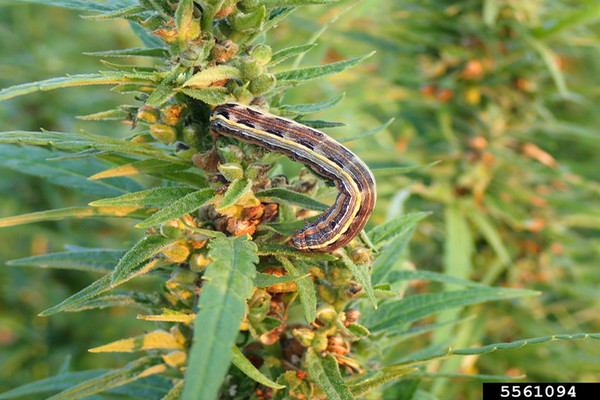Pest Insects
Common Pests:
- Leafhoppers
- Whiteflies
- Aphids
- Corn Earworm Caterpillars
PestS That Suck Fluids
Insects that siphon plant sap have straw-like, piercing-sucking mouthparts. Symptoms of damage by these insects may present as general yellowing, wilting, or the presence of many small dark spots (stippling) on leaves or stems where insects are feeding. Damage symptoms may not appear until after feeding has taken place, or it may appear suddenly when large numbers of insects are feeding on a plant.
Whiteflies
Whiteflies are not true flies as the name might imply, rather they are in the true bug group. Adult whiteflies are small, white, and moth-like in appearance. When plants are disturbed, adult whiteflies often fly away in groups, creating the appearance of a white “burst” of insects. Immature whiteflies look very different from adults: they are flattened, lack wings and are semi-transparent. Immature whiteflies reside on the undersides of leaves and may be mistaken for scale insects or leaf spots. Magnification is helpful and may be required to identify whiteflies, especially the immature stage. Symptoms of whitefly infestation on plants are similar to those of aphid infestation, including yellowing and wilting leaves.
CANNABIS APHID
Cannabis aphids are small, soft-bodied insects that may be winged or wingless. Adult aphids range between 1.8-2.7 mm long and are visible to the naked eye. These aphids can vary in color throughout the season, appearing pale pink, green, or brown. Cannabis aphids may occur on industrial hemp plants grown indoors and outdoors. Symptoms of cannabis aphid infestation on plants include yellowing or wilting leaves, and stunted growth.
Potato Leafhopper
Potato leafhoppers are bright yellow, migratory insects. This pest moves quickly, jumping if they are immature and flying away if they are adults. As a result, this insect can be difficult to observe. They have a wide host range and can be found on many different crop and weed species. Damage appears as leaf scorching (hopper burn) at the tips, leaf distortion, and leaf dropping when damage is severe.
Mites
Mites are small arachnids that feed on plant fluid. Magnification is often necessary to detect these arthropods on plants.
Spider Mites
Spider mites can be white, green, or reddish, but all have two distinct dark spots on either side of the body. They cause webbing on plants and stippling damage on leaves.
Russet Mites
Russet mites are tiny, cigar-shaped arachnids and are not visible without magnification. These mites do not cause webbing, they can be moved through wind. Russet mites can cause leaf curling, puckering appearance, and stunted growth.
Broad Mites
Broad mites are tiny, oval shaped arachnids that can be translucent to amber colored. Eggs are translucent, ellipsoid, and have small white tufts on the surface. Broad mites can cause leaf distortion and stunted growth.
pLant Bugs
A diversity of plant bugs (Family: Miridae) may be found on hemp plants; however, it is unclear if they are economically important pests of hemp. These insects vary dramatically in their size and color, but generally have a body that is longer than it is wide, and an elongated, shield-like shape. Adults and immature stages move quickly when disturbed and adults are good fliers that will fly away readily. They can be found on stems, leaves, or buds, and feed on plant sap. Plants bugs are known to feed on many different cultivated and weedy plants. The tarnished plant bug is one insect in this group that is known to cause damage to many cultivated crops by feeding on young tender plant tissues including leaves and flowers. Symptoms of feeding can include yellowing or wilting, which may be hard to distinguish from other plant stressors. The tarnished plant bug is also an important pest of seed crops, because immature and adult stages feed on developing seeds, which causes direct damage and reduces seed set.
Stink Bugs
Stink bugs vary in size and color, but generally have a shield-shaped body. They produce a stinky odor when threatened, which is a defense against predators. Stink bugs are good fliers, but only the adults have wings. Immature stink bugs (nymphs) can only crawl or walk from plant to plant. Adults and nymphs feed on plant sap and are often found on the stems and main stalk of hemp plants. Symptoms of stink bug feeding on hemp may be difficult to separate from other symptoms of plant stress, but leaves may appear wilted or yellowed when feeding is severe.
Pests that chew
Insects that chew plant tissues like leaves, stems, or flowers, have crushing mouthparts called mandibles. Symptoms of damage by these insects may present as open holes on the edge or interior of leaves that vary in size and even shape. Damage by chewing insects is often more obvious than damage by insects that suck plant fluids
Beetles
Flea Beetles:There are many different kinds of flea beetles, which are known best for their quick, jumping behavior. Flea beetles are in the leaf beetle family and vary in size, although most are easily visible to the naked eye. They often have a shiny or metallic appearance. Flea beetles feed on plant stems and leaves, and feeding damage appears as small, round holes in leaves (‘shotgun’ damage). Red-headed flea beetles have been found feeding on hemp leaves, but it is unclear if this causes serious damage or yield loss.
Grasshoppers
Several kinds of grasshoppers may be found on hemp plants, including short-horned grasshoppers (Family: Acrididae), and pygmy grasshoppers (Family: Tetrigidae). Most grasshoppers are polyphagous, meaning they feed on many different kinds of plants. Grasshoppers are known to feed on hemp stems and leaves and cause defoliation, but hemp plants are often able to tolerate grasshopper feeding damage without yield loss.
Caterpillars
Caterpillars are the immature (larval) stage of moths and butterflies. They have a “worm-like” appearance but unlike worms, they have a clearly visible, hardened head capsule and six small legs at the front of the body.
Corn Earworm
Corn earworm larvae (caterpillars) have a variety of color morphs, including green, brown, and yellow. Dark bumps run down both sides of the body and the bumps have protruding hairs. Larvae feed on the bud tissue, leaving behind frass (insect waste) and create entry points for pathogens. Adult corn earworms are drab-colored moths that are monitored using pheromone-baited traps to identify when peak moth flights occur.
Eurasian Hemp Borer
Eurasian hemp borer adults are small grayish to brown-colored moths with white lines on the forewings. Larvae (caterpillars) are the damaging life stage and bore into the stalk material, where they feed and remain until emerging as an adult moth. Larvae are small and change in color from cream to pink, orange, then red as they mature. They are often found in small diameter branches or stems of hemp plants.
Yellow-Striped Armyworm
Yellow-striped armyworm caterpillars have brown to dark gray bodies, and mature caterpillars have with a distinct yellow line running down the length of the body on either side. Feeding occurs mostly on the foliage but can also be observed in the buds of hemp plants later in the season.
Need Help Identifying an Insect?
Do you have an insect you can’t identify, click below to be redirected to the Purdue Plant & Pest Diagnostic Lab.
find bugs
